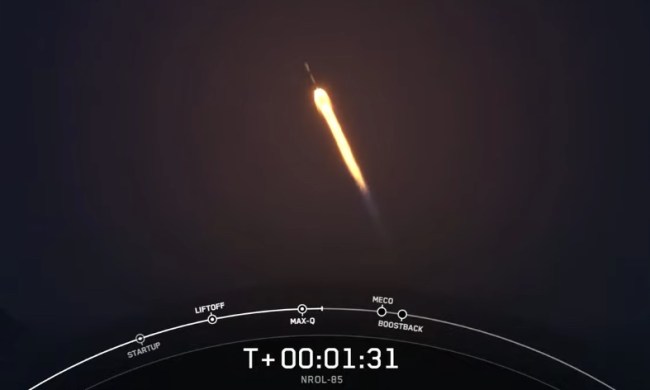With every SpaceX launch, it’s usually the returning rocket (or rockets) that get all the attention. For many, the fact that the company created a system capable of landing a rocket standing up minutes after launch is still a feat that, when witnessed, results in many a jaw heading south.
The rocket’s unassuming fairing, meanwhile, leads a somewhat quieter existence, overshadowed by all the drama generated by those powerful, noisy, and rather clever Falcon 9 rockets.
But with a new video posted by SpaceX on Wednesday, that’s all about to change.
The fairing, for those not in the know, is the section at the top of the rocket that houses and protects the payload up until the moment of deployment. It’s sometimes referred to as the nose cone.
On July 4, SpaceX tweeted a stunning video (below) showing the reusable fairing on its way back to Earth following the third launch of its enormous Falcon Heavy rocket on June 25, 2019. As you can see in the footage, the powerful natural forces experienced by the cone produce a crazy light show, which, although it may not cause your jaw to come loose, definitely won’t fail to impress.
View from the fairing during the STP-2 mission; when the fairing returns to Earth, friction heats up particles in the atmosphere, which appear bright blue in the video pic.twitter.com/P8dgaIfUbl
— SpaceX (@SpaceX) July 3, 2019
But that’s not the end of the story. Following its dramatic descent, a section of the two-part fairing was successfully caught by a SpaceX marine vessel waiting in the Atlantic with a massive net. It’s the first time that the vessel, called Ms. Tree (formerly known as Mr. Steven), has managed to catch the fairing after a number of failed attempts — check out this effort earlier this year that came tantalizingly close to succeeding.
Recovering the fairing is part of SpaceX’s efforts to create a reusable rocket system capable of dramatically reducing the cost of space missions.
Briny ocean water can damage the fairing, and with a value of $6 million, it’s clearly better to land it on the net than in the sea.
But, as we know from past attempts, catching it is also quite a challenge. Ms. Tree is 62 meters (203 feet) in length and 10 meters (33 feet) wide, and has a net covering an area of around 3,700 square meters (nearly an acre). The fairing as a whole is around 42 feet tall and 15 feet wide, and weighs 1,000 kilograms (over 1 ton).
To help stabilize the fairing during its descent, SpaceX incorporated cold nitrogen thrusters into each of the two cone sections. The system also uses a GPS-equipped, steerable parafoil (something like a parachute) that deploys at about five miles above sea level. This slows the fairing down for a softer landing and also gives the ship more time to adjust its position, thereby improving its chances of catching it.
At the current time, the team is simply trying to perfect the landing technique for one of the cone sections, with the other part still ending up in the sea. Now that it’s making proper progress with the landing system, SpaceX is expected to purchase a second ship to catch the other half of the fairing as well.


